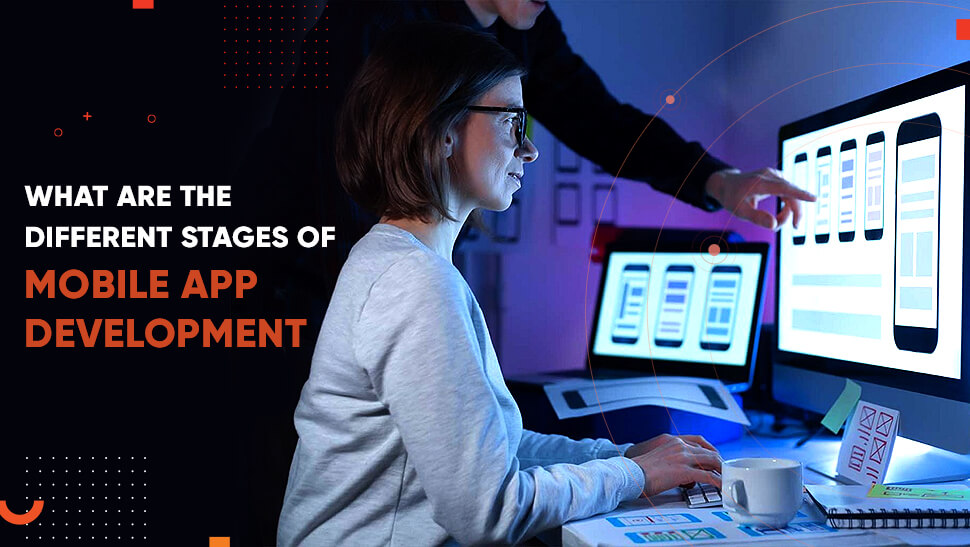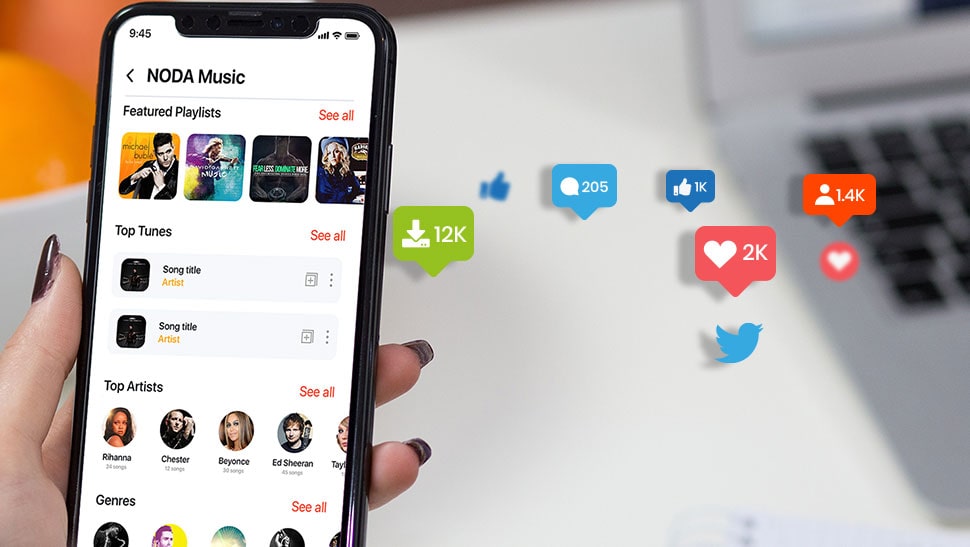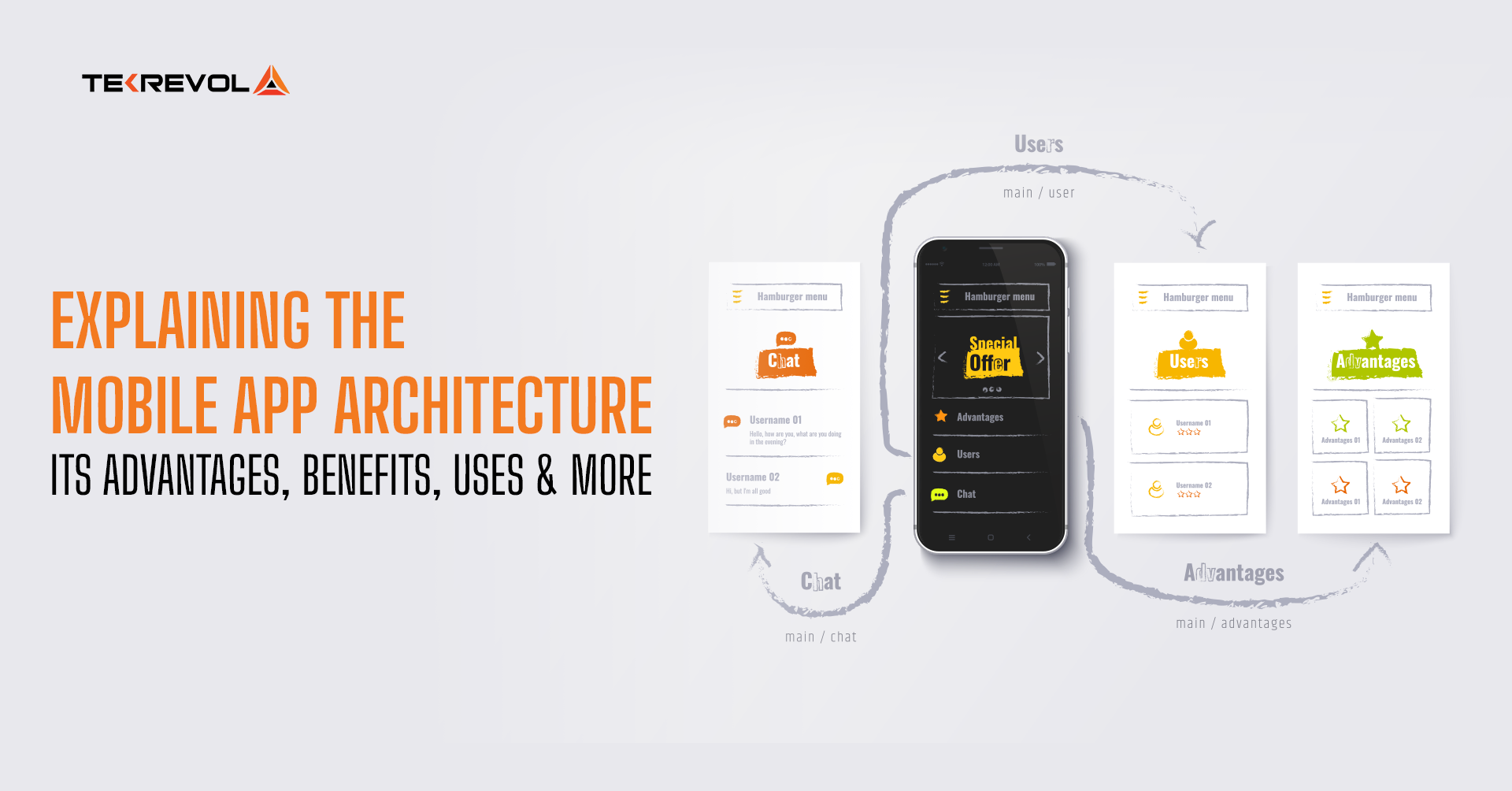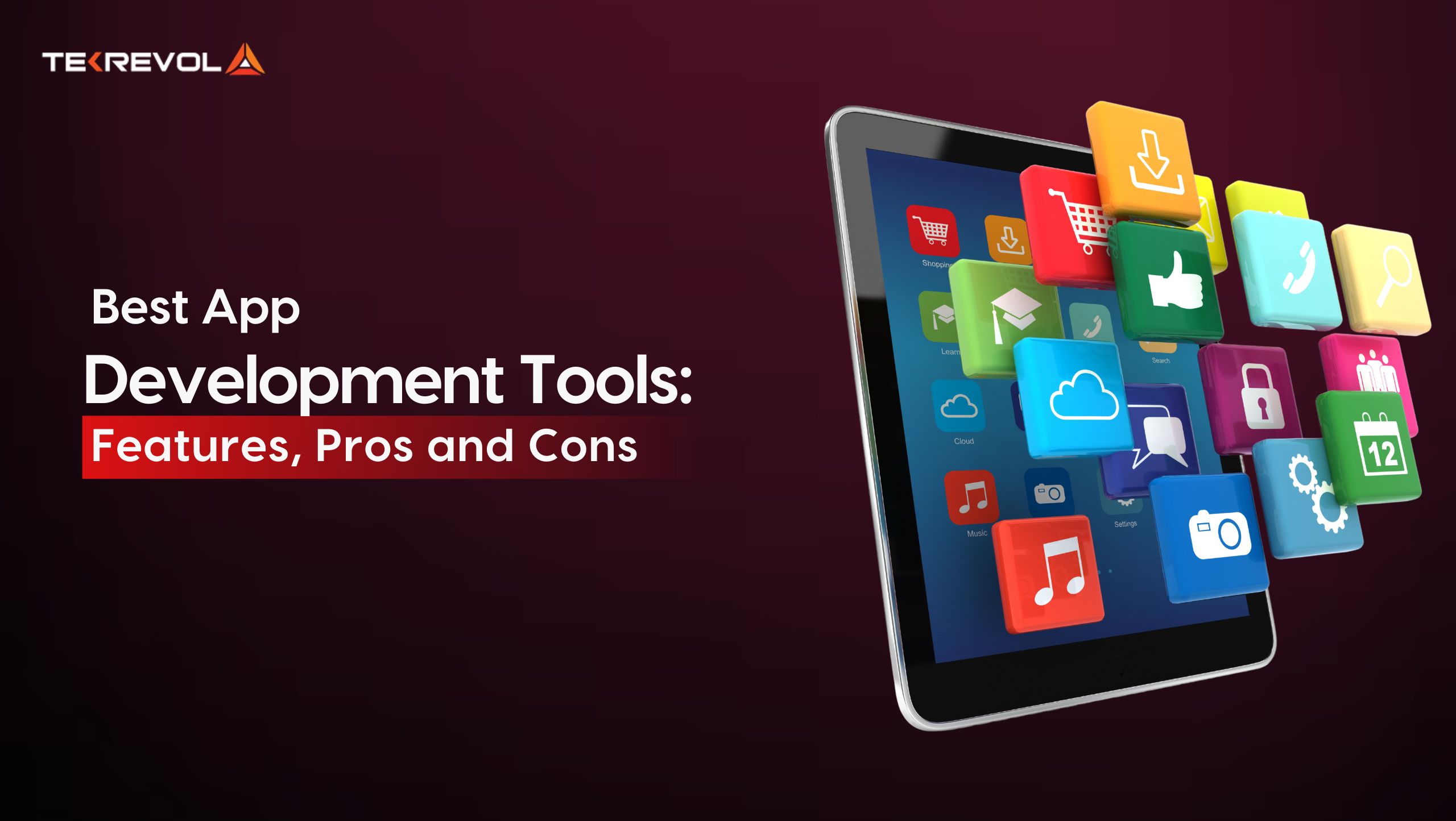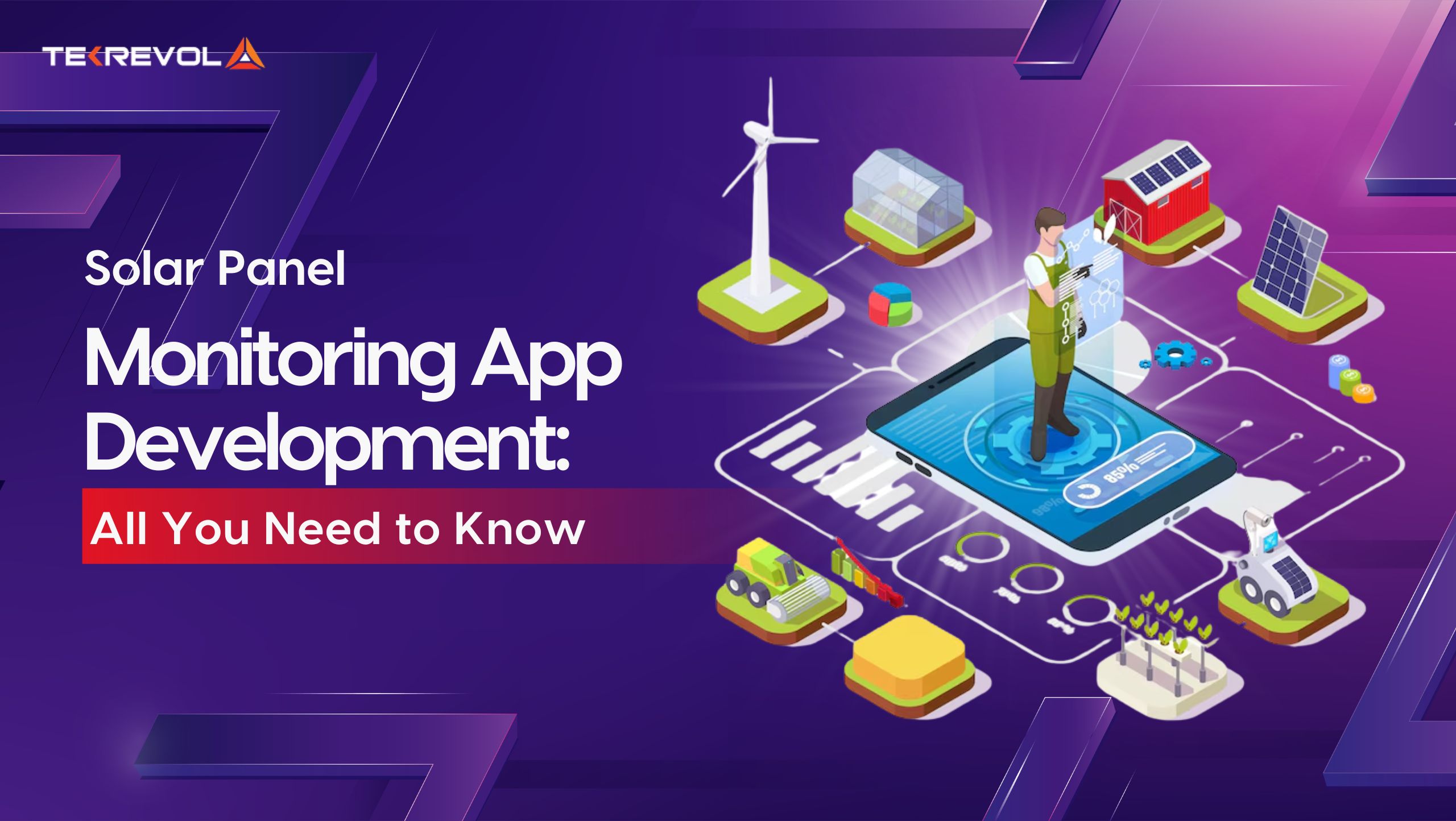Building a mobile app is certainly not an easy task. From understanding the app from a technical standpoint to making it feature-packed and not feature-stuffed, building a mobile application requires expertise and experience to ensure seamless and swift development and designing process. Therefore, it’s crucial to know the process of creating an app.
Making a mobile application successful requires extensive planning, research, agility, efficiency, and much more and this is our topic of today. We’re going to tell you about the stages of app development that will enable you to build a mobile application like a professional.
So, without any further ado – let’s uncover the robust set of methods that will ensure the creation of a perfect app while saving your time and resources.
- On this page:
- Stage#1: Pre-Design & Development Phase
- Stage 2: The First App Design
- Stage 3: App Development
- Stage 4: App Support And Assistance

Stage#1: Pre-Design & Development Phase

The pre-designing and development phase revolves around understanding the requirements either of the business and creating a plan according to it. To be more precise, it all starts with the project brief.
The project brief or scope of the applications could take several pages to complete but by the end of the day – you’ll have a much clear vision of what needs to be done in order to create the application.
In some cases, the pre-development or designing phase of the mobile application also include analyzing the requirements of the audience, streamlining the technology stack and ensuring innovation.
In a nutshell, the pre-design or development phase of a mobile application can include the following:
• Identification of the main objectives of the app.
• Discussing different ideas for the project.
• Understanding the app from user’s perspective.
• Creating a wireframe to ensure a swift mobile application development process.
• Conducting thorough research and analysis to ensure the viability of the project.

The Outcomes Of Pre-Design And Development Phase
The whole idea is to ensure the creation of a robust mobile application, right? This step ensures that. With myriad research, proper approach and streamlining the technology stack, you’ll be creating a strategic roadmap for the development and designing of your project.
Being an app development company Florida , we know how to develop an effective mobile app development plan to make the overall process of creating a mobile application swift and efficient.
Hence, the final outcome of the pre-design and development stage is that by the end of the process, you’ll have deep insights as to what needs to be done in order to create the mobile application and how you can do that.

Stage 2: The First App Design

Design is the second stage of app development. You can initiate the designing stage after creating a comprehensive roadmap and scope of the application.
What The Designing Phase Of App Development Entails
In the design stage, we aim to create the UI (user interface) and UX (user experience) of the mobile app and considering the fact that customer experience is the most important pillar of success in the digital world, the UI and UX development stage of the app is super-imperative.
The UI and UX development phase is iterated and tested until the design is finalized by the business. Our recommendation here is to research the latest trends in the market, see what your competitors are doing with their mobile application, this would unveil important details and help you get on par with the ever evolving needs of your customers.
Also, this phase is a subject to change as long as a flawless design is created. Any changes in the UI or UX should be made here because when the app moves to the functionality and feature integration/development stage, the changes in the UI or UX could compromise the agility and efficiency of the app let alone affecting the quality.

Moreover, here are the five processes involved in the design stage:
1. Wireframe
2. Concepts
3. Collaborative Design
4. Prototyping
5. User Testing
1. Wireframe
The wireframe is one of the mobile applications development processes where developers work on the app’s UX (user experience) and its flow between screens. The wireframe is utilized for connecting these screens and how a user can navigate to these screens.
Wireframes are extensive. They generally have hundreds of screens along with numerous functions. They help in identifying the number of taps required for a screen to navigate to another screen. For instance, if an app takes five taps to utilize one functionality of an app, then it surely needs improvement.
2. Concepts
Creating concepts for the app is the second phase of the design stage. It involves the visual layout of the app and requires the developer to work on two or three main app screens. Then the developer has to conceptualize different ways to make them visually appealing for the users.
Mostly visual elements are highly dependent on what the client suggests. If they have set up stringent guidelines to follow, then the prime focus of concepts is on the layout rather than color and font. On the other hand, if the client is an entrepreneur or a startup, then there’s more room for creative input. The developer has to work with multiple designers to design more visually appealing elements for the app.
3. Collaborative Design
Once the developer has established the concepts of the app, they start collaborating with the client in the design process. Generally, a client likes different visual elements of each concept. For instance, they will like a button of one concept and the font of another. Therefore, an expert developer has to cater to the client’s request and unify all the parts together to bring one outstanding design for the app.
4. Prototyping
When the client approves the visual design that is easily blended with the UX flow, it enables the developer to create a prototype for the app. Prototyping of an app consists of multiple images on each screen that navigate one screen to another screen just like using a real app. Most people cannot realize that it’s just a prototype because it can be installed on mobile devices and can be accessed from there.
5. User Testing
User testing is the last phase of the design stage that’s conducted once the prototype is created. Generally, an app prototype is used for the internal purposes of people within the company for iteration. In the process of testing the app, the developer ensures that the app would run smoothly without any hiccups that could adversely affect the overall user experience.
What Are The Outcomes From The App Design Stage?
In this stage of app development, the developer has created a dynamic UX wireframe consisting of multiple screens on the app. Most prototypes are made differently for iOS and Android platforms to be installed on multiple devices.
A prototype of the app is highly crucial for testing the functionalities and UX flow between numerous screens. It can also be used for pitching the idea to investors or stakeholders of the company. When you have a prototype, you would be able in a better position to communicate the concepts of the app to anyone rather than simply pitching them with words.

What Happens Now?
The design stage of app development defines the guidelines for the developers to follow in building a mobile app. Keep in mind that the design of the app should be practical rather than just being aesthetically pleasing.
What Should I Consider Before Starting An App Design?
Research On Your Competitors Is More Helpful Than You Imagine
You can come with a plethora of unique and ingenious ideas just by researching your competitors. In this way, you’d be better able to find out the necessary traits, find opportunities and gaps on your competitors’ apps, enabling you to fill that gap with your app.
Prioritize Your Users’ Opinions Over Yours
Remember, you’re not developing a mobile app for yourself but for your potential users. Therefore, always prioritize their opinions over yours. Most of the time, apps fail because the developers don’t understand the needs of their target audience. So, you can utilize surveys and conduct research in order to find out what your users really want.
For instance, you prefer the color and style of your app, but according to a survey, your target audience doesn’t like it; you need to listen to your target audience rather than make decisions independently.
Make Your Brand Design Mobile-Friendly
Most major brands have a brand design that works great on computers and big screens, but they are not responsive to mobile devices.
For instance, your logo and slogan easily fit on the computer screen, but they won’t be able to fit on smaller screens. Therefore, you need to take the mobile-friendly approach and collaborate with your marketing team to build your logo that perfectly fits mobile screens.

Stage 3: App Development
Once you have successfully completed the pre-design and design stages of app development, it’s time to move on to the stage of app development.
What Should I Consider Before Starting App Development?
Once the wireframe is developed on the design stage of app development that establishes multiple functionalities and visual elements of the app screens, it’s time to develop the mobile app.
There is one key component that connects the design and development stages of app development; technical specification. That further takes the wireframe into more details with respect to how it works and how it really looks.
For instance, if one screen is getting external data, it will provide more details on the source and server it’s retrieving from.
What Happens In The Stage Of App Development?
An app is built at this stage of app development. In our case, we take the approach of conducting daily sprints. It’s a strategic meeting that is a part of Agile methodology. Every department of the project shows the development of specific functionality of an app within a specific time period (generally takes about two weeks).
Then a build is released for review and testing to the QA team. They evaluate the functionalities whether they are working or not.
The best approach towards developing an app is to include stakeholders or the client in the sprint. In this way, each app development process will be transparent to them as they will know the current progress report of the project.
At the end of development sprints, all it’s left is to conduct UAT (User Acceptance Testing). This test has to be approved by the client.
Once the app is approved, the app will move on to the next phase, RC (Release Candidate), where all necessary adjustments are made to be released on Google Play Store and iOS play store or even on the client’s website.
What Are The Outcomes From The App Development Stage?
At the end of this stage of app development, you most definitely have developed an app. In our case, we will also provide full functional specifications along with the entire source code to the client. We believe in providing complete control to our clients as it’s their project, to begin with.
How Long Does It Take To Develop A Mobile App?
Generally, it takes about six months to a year for a mobile app to develop. If it takes more than a year, we highly recommend dividing the app development process and releasing an initial version of the app with limited functionalities. It paves the way for the learning curve. Moreover, if the app development timeline is within a year, it will still not have all the functionalities in its initial release. As most of the time, more functionalities are introduced in future releases and updates of the app.
The functionalities introduced in the later versions of the apps will most likely be based on analytics. When you get detailed analytic reports of your users, you will make necessary changes and updates on your apps. Sometimes, users ignore the main feature of the app and utilize only one part of the app.
The unexpected feature of the app will enable you to work on improving that feature further for the users rather than working on the main feature that is completely ignored.

What Should I Consider In The Development Stage?
Security Is Important, But It Depends On The Nature Of An App
Most users fret about the security of an app. However, security depends on the nature of the app. It generally involves how sensitive data you have on the mobile app.
For instance, if it’s just a mobile gaming app like Candy Crush, it doesn’t require high-security protocols because these apps don’t store your sensitive data.
On the other hand, if it’s a social media app like Facebook or Twitter, security could be a huge concern. As these likely to include your photos, videos, and other personal data that you would not want to share outside your social circle.
Dynamic Functions Require A Credible Data Source
A credible data source is crucial to provide the dynamic functions of an app. For instance, if you’re looking to gather data of nearby clothing stores with a specific clothing attire, you need to know the source of the data and how you will be able to gain its access.
Know The Difference Between Initial And Final Releases
Iteration plays a key role in the app development process. It’s well-advised to never expect too much from every version of the app in terms of its functionality. You should always focus on initial versions as it allows you to make necessary changes while it’s under progress.
- Need An Expert Advice On Development? Call Us Today!
Stage 4: App Support And Assistance

When you’ve gone through all the stages of app development, you may probably have a mobile app up and ready for your potential users. This is the final stage of app development where you will need support and assistance to maintain your mobile app on a continual basis.
There are several aspects that you need to consider when supporting your app. Those include:
Bugs And Glitches
The first aspect of the support stage is fixing bugs and glitches on the app. No matter how rigorous testing methods you adhere in the development stage, there will always be something out of the ordinary that may occur when your app goes live. Errors could occur either by using from an old mobile device, an outdated OS version, etc. You need to fix these issues immediately to deliver an exceptional user experience.
Maintenance Updates
Continuous maintenance updates are another important aspect to consider in the support stage of app development. If your app isn’t updated regularly, it will not optimally work on the latest OS versions and mobile devices. While small and minor updates are an exception.
However, maintenance updates are easily manageable as app developers usually gain access to the beta versions of OS updates prior to a month they are officially released. Thus, it allows developers to collaborate with clients and make necessary changes, updates, or even add new features.
Product Roadmap
Producing a product roadmap is an essential element in building a mobile app. We at TekRevol, highly recommend our clients to produce one if they haven’t done it already. We also help them produce a product roadmap; they cannot do it by themselves. The reason we stress creating a product roadmap so much is that it’s the document that lays out the vision of where your mobile app would be in the coming years.
Even though the product roadmap is a definitive resource that showcases your app’s vision, you should also utilize analytics tools to provide a deeper analysis that could alter your vision for the better.
Product Updates
Apart from maintenance updates, product updates are also a great way to reengage your target audience. When you perform an update of your mobile app, your users will notice the latest version of your app and update it on an immediate basis. Once the update is done, they will most likely open the app to view changes on the app. Thus, updates provide a great opportunity for you to interact with your inactive users.
The frequency of product updates is also worth noting. People despise getting updates on a continuous basis. Moreover, you need to strike a clear balance between introducing a new layout and design and introducing new features in your updates.
In the support stage of app development, clients often ponder over budget allocation for support and maintenance. We highly advised that whenever you opt for an iPhone App Development or Android app development agency, you need to allocate at least 15 to 20 percent of your budget for support. In this way, once your app is live, you will be able to have a sufficient budget to fix issues and bugs in time and make plans to scale in the years to come.
- Need Tech Support? Chat With Us!

Conclusion
We hope this article provides a clear understanding of all four stages of the app development process.
As you now know, there are many factors involved apart from coming up with a unique idea for the mobile app.
However, when you have the right planning and follow the right processes of different stages of app development, you will develop an app that truly entices your potential users to download and use for years to come.

 2201 Views
2201 Views April 12, 2021
April 12, 2021